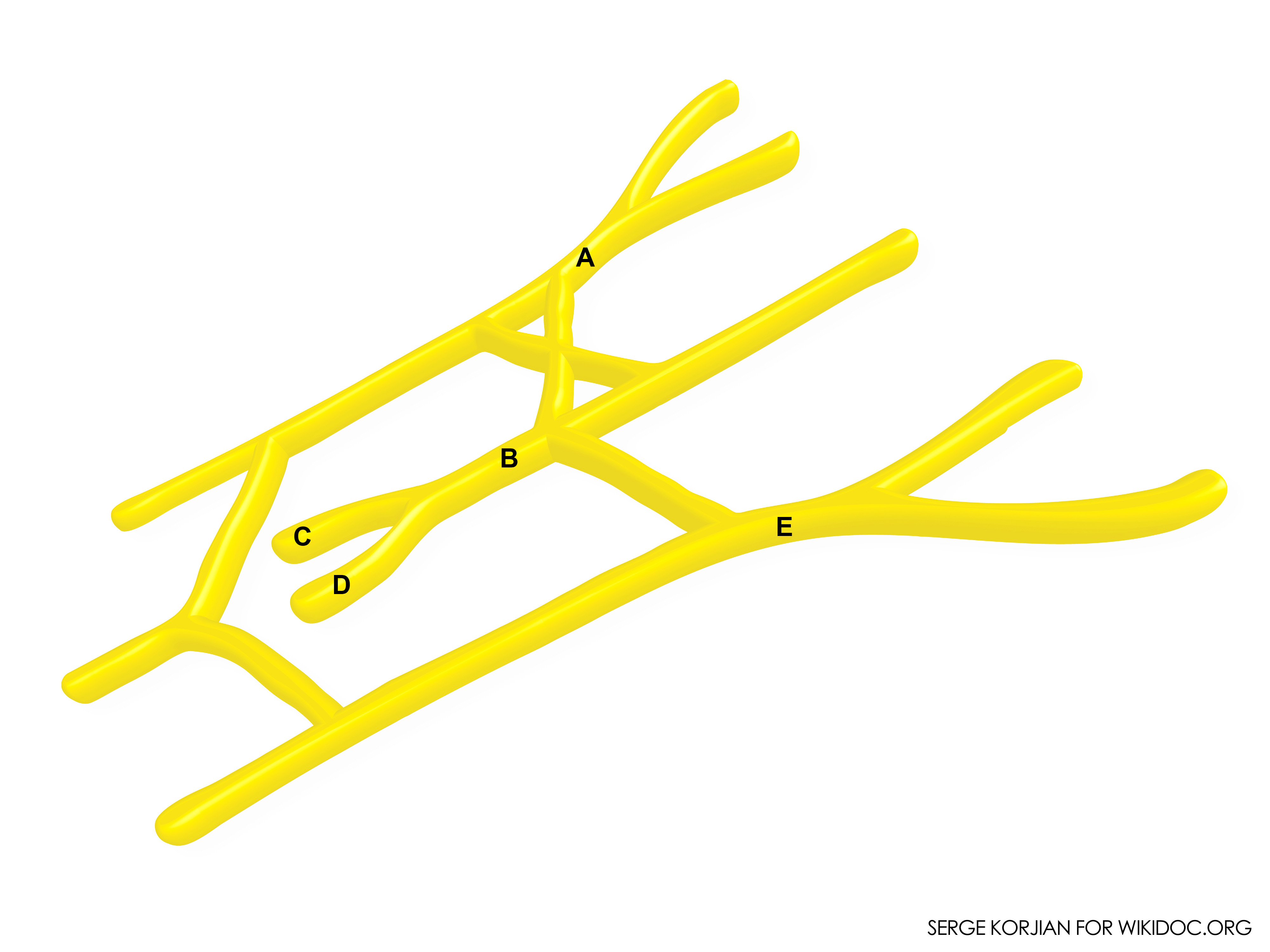WBR0550: Difference between revisions
Jump to navigation
Jump to search
No edit summary |
No edit summary |
||
| Line 25: | Line 25: | ||
'''Educational Objective:''' Fractures of the surgical head of the humerus are a common cause of axillary nerve dysfunction. The axillary nerve is responsible for innervating the deltoid muscle. | '''Educational Objective:''' Fractures of the surgical head of the humerus are a common cause of axillary nerve dysfunction. The axillary nerve is responsible for innervating the deltoid muscle. | ||
'''References:''' First Aid 2012 page 409. | '''References:''' First Aid 2012 page 409. | ||
|AnswerA=A | |AnswerA=A | ||
|AnswerAExp='''Incorrect:''' Point A indicates Erb’s point, the union of the C5 and C6 roots of the brachial plexus. Injury of the C5-C6 nerve roots is responsible for [[Erb’s palsy]]. | |AnswerAExp='''Incorrect:''' Point A indicates Erb’s point, the union of the C5 and C6 roots of the brachial plexus. Injury of the C5-C6 nerve roots is responsible for [[Erb’s palsy]]. | ||
Revision as of 01:38, 30 September 2013
| Author | PageAuthor::William J Gibson |
|---|---|
| Exam Type | ExamType::USMLE Step 1 |
| Main Category | MainCategory::Anatomy |
| Sub Category | SubCategory::Musculoskeletal/Rheumatology |
| Prompt | [[Prompt::A 42-year-old man presents for follow-up after being treated for injuries from a motor vehicle collision 3 months ago. The patient suffered a fracture of the surgical head of the left humerus, which was repaired surgically. One week ago, the arm was freed from immobilization, but the patient has not regained full motor function. On physical exam, the patient is unable to abduct the left arm more than 30 degrees from the body. The patient retains full function of the intrinsic muscles of the hand, and is able to move his wrist freely. Which of the following nerves of the brachial plexus is most likely injured in this patient? |
| Answer A | AnswerA::A |
| Answer A Explanation | [[AnswerAExp::Incorrect: Point A indicates Erb’s point, the union of the C5 and C6 roots of the brachial plexus. Injury of the C5-C6 nerve roots is responsible for Erb’s palsy.]] |
| Answer B | AnswerB::B |
| Answer B Explanation | [[AnswerBExp::Incorrect: Point B represents the posterior cord of the brachial plexus, which gives rise to the axillary and radial nerves. While posterior cord injury would cause weakness of the deltoid muscle (through loss of axillary nerve fibers) the patient would exhibit additional symptoms arising from loss of radial nerve function, such as wrist drop.]] |
| Answer C | AnswerC::C |
| Answer C Explanation | [[AnswerCExp::Correct: Point C represents the axillary nerve, which can be injured by fractures near the surgical head of the humerus. The axillary nerve innervates the deltoid muscle, which is responsible for abduction of the arm beyond 30 degrees from the body.]] |
| Answer D | AnswerD::D |
| Answer D Explanation | AnswerDExp::'''Incorrect:''' Point D represents the radial nerve. The radial nerve can be injured in conditions such as “Saturday night palsy”, in which the patient will exhibit weakness of the wrist extensors. |
| Answer E | AnswerE::E |
| Answer E Explanation | AnswerEExp::'''Incorrect:''' Pont E represents the union of the C8-T1 roots of the brachial plexus. This area can be injured in Krumpke’s palsy which causes “total claw” deformity of the hand due to lumbrical dysfunction. |
| Right Answer | RightAnswer::C |
| Explanation | [[Explanation::Explanation: The patient in this vignette has suffered a lesion of the axillary nerve due to a fracture of the surgical head of the humerus. The axillary nerve derives from the C5-C6 roots of the brachial plexus and innervates the deltoid muscle. The deltoid lies over the shoulder, and is responsible for arm abduction more than 30 degrees from the body. Lesions of the axillary nerve will cause a sensory deficit over the shoulder and over time will cause a “flattening” of the shoulder due to atrophy of the deltoid.
Educational Objective: Fractures of the surgical head of the humerus are a common cause of axillary nerve dysfunction. The axillary nerve is responsible for innervating the deltoid muscle. References: First Aid 2012 page 409. |
| Approved | Approved::Yes |
| Keyword | WBRKeyword::Brachial, WBRKeyword::Brachial plexus, WBRKeyword::Arm, WBRKeyword::Deltoid |
| Linked Question | Linked:: |
| Order in Linked Questions | LinkedOrder:: |
